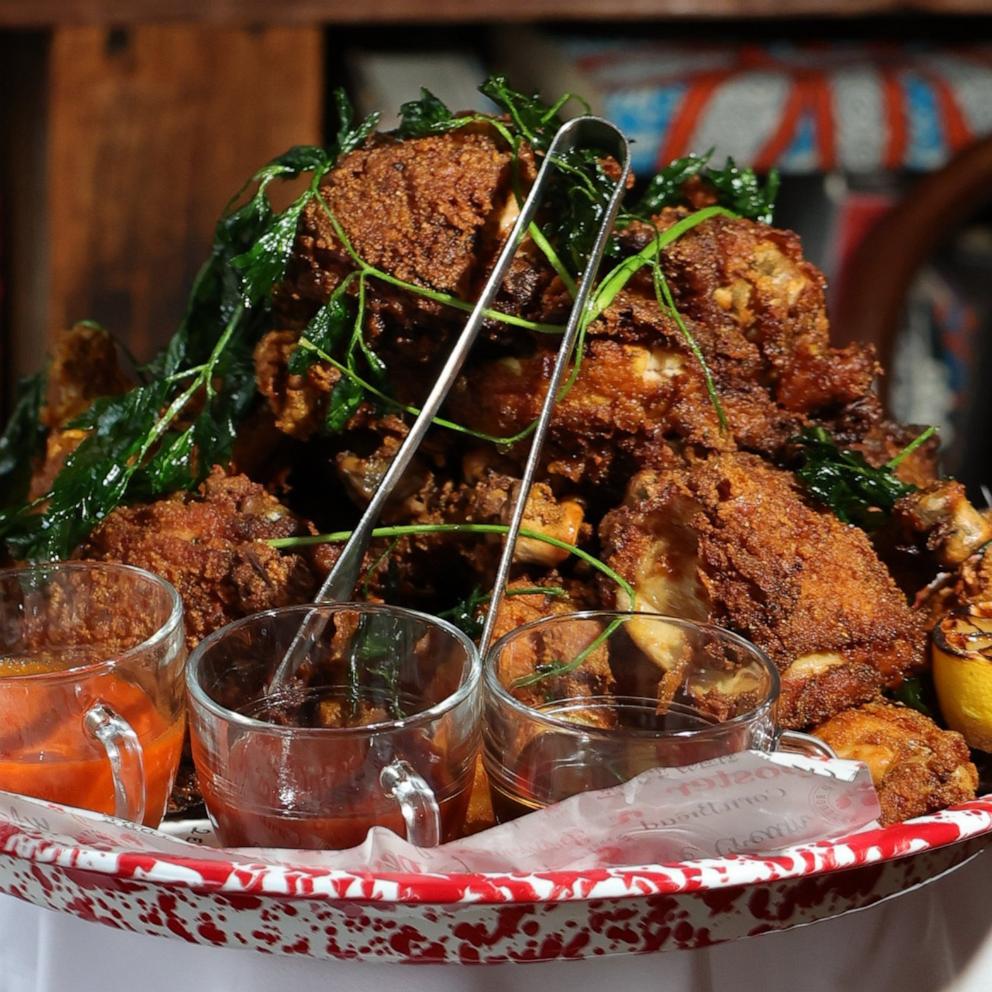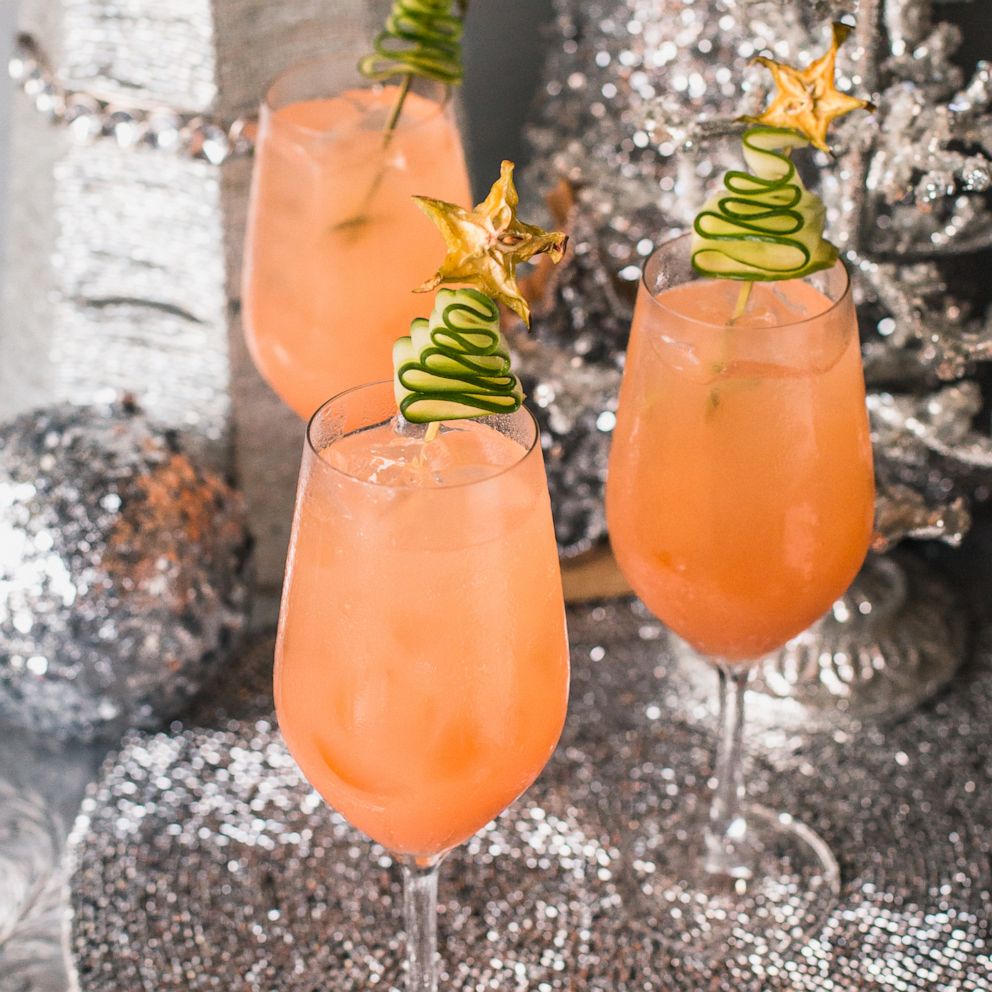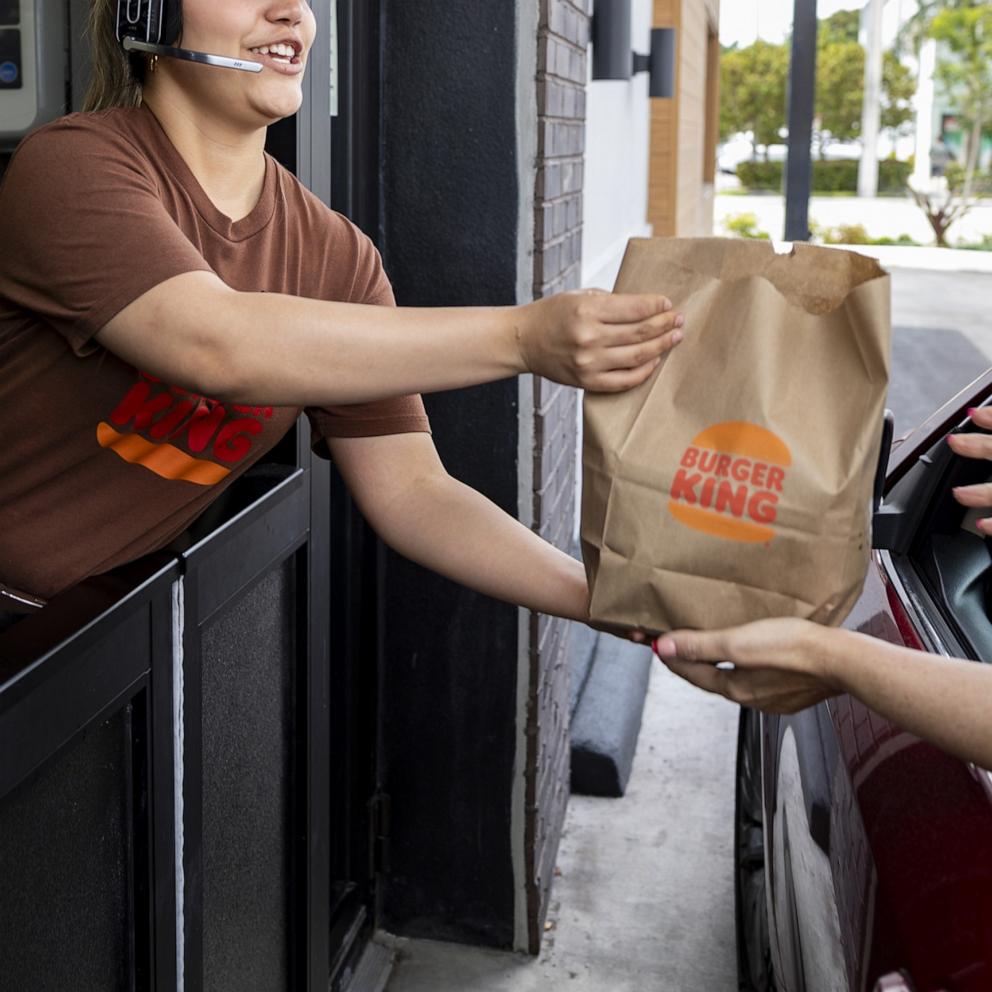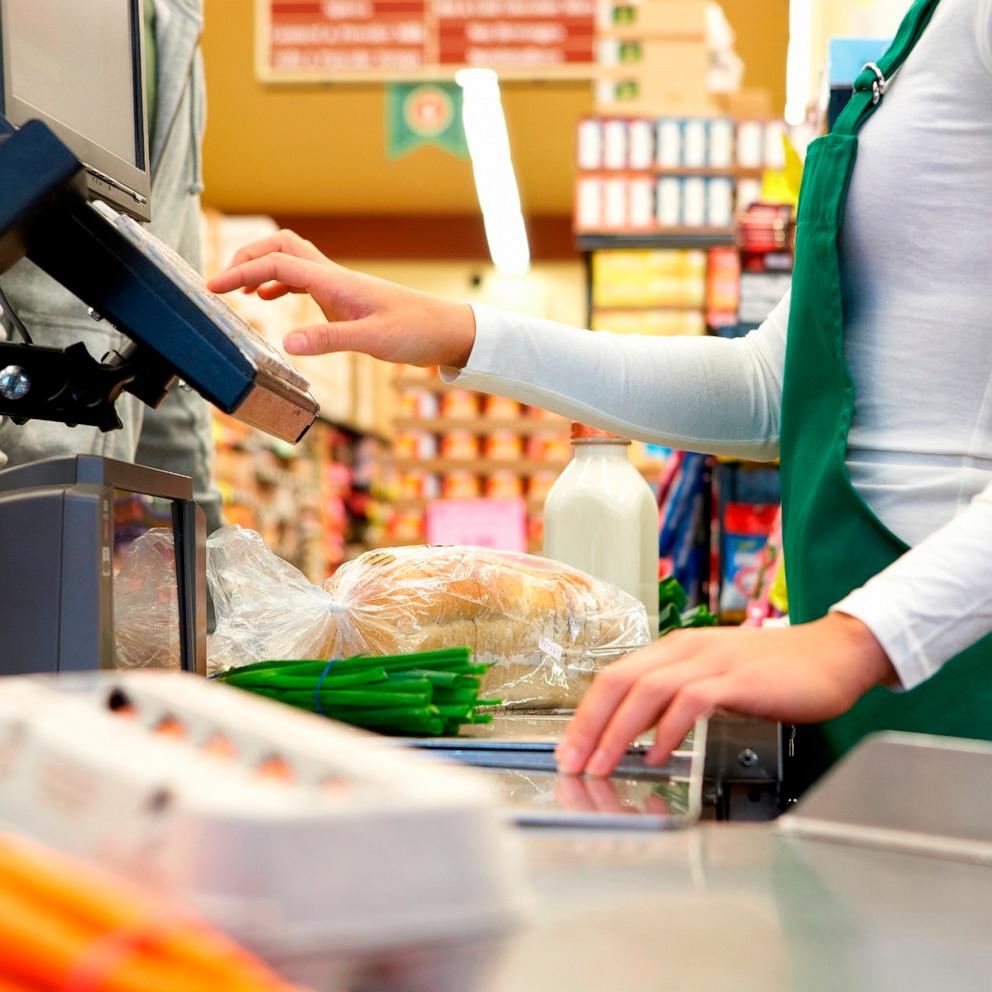4th generation butcher explains why she founded a veggie-forward sausage rooted in sustainability
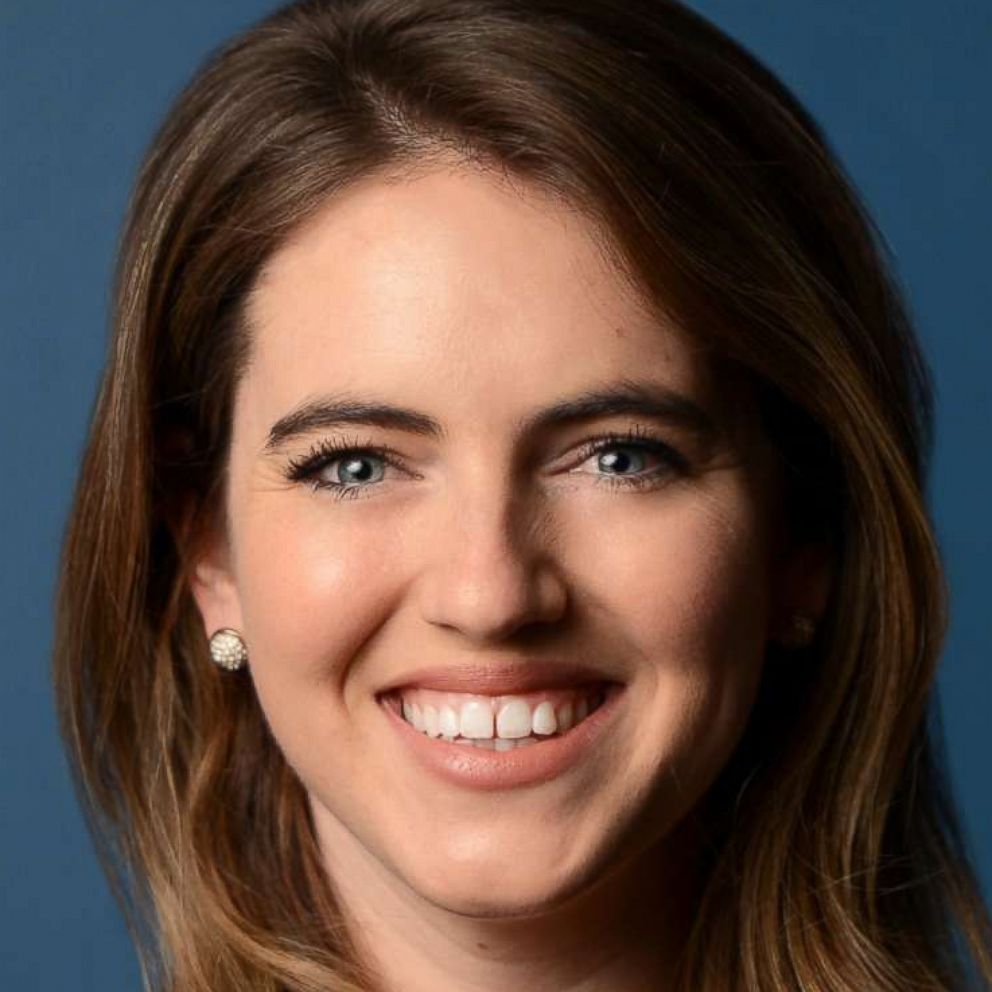
The idiom "how the sausage is made" doesn't typically produce a vibrant mental image, certainly not one with colorful hues derived from sustainably sourced ingredients, packed with vegetables. But for one fourth-generation female butcher, that is indeed the case.
Boston-born butcher Cara Nicoletti founded Seemore Meats & Veggies with a vision to transform America's relationship with meat by combining fresh produce with humanely raised meat from purveyors with a transparent and eco-conscious framework.
"Sausages kind of have a bad rap ... but they are really one of the first sustainability-minded foods on Earth," Nicoletti told "Good Morning America." "They're also one of the oldest man-made foods. So they were made with the intention of using every single part of the animal. And I think that's part of the reason that I was so drawn to them."
Nicoletti was "raised in the meat industry," she said reminiscing on spending days after school at Sallet's, her grandfather and great uncle's eponymous butcher shop in the North End of Boston.

It was there that she first learned the business from Seymour Salett, 93, her now-retired grandfather who worked the family's shop for 60 years.
"I was kind of the only one of all the grandkids that was interested in butchery -- I was always sort of fascinated by it and part of that was that I was really passionate about loving animals. So I was curious about the ways that we eat them," she explained. "I had a better understanding of where our food came from, from a young age, just because I was seeing it every single day."
After reading E. B. White's children's literary classic "Charlotte's Web" in third grade, Nicoletti recalled thinking, "I cannot let anyone know that my family is butchers [or] where I'm going after school every day."
Eventually, the universe began to pull Nicoletti back to her roots when she began working in New York City restaurants throughout and after college.
"I found myself gravitating right away to meat preparation, meat fabrication because there was a lot of waste going on in the restaurants that I was working for -- I wanted to figure out how to combat that," she said. "It was drilled into my head from a very young age that you don't waste anything on the animal."
Nearly 14 years ago she landed an apprenticeship at a famed -- and at the time, newly opened -- Brooklyn butcher shop, The Meat Hook.
What she found most interesting working behind a butcher counter "was seeing the ways people were attached to certain cuts ... whether they were reading a recipe and didn't want to stray from it or it was just 'this is what I like and I don't want to try anything else.'"
Nicoletti used her knowledge of whole animal butchery as an educational opportunity to teach customers what to do with different meats in similar preparations.
"It could be less traditional cuts that they maybe didn't know about, but that they'll love just as much, because a lot of that is just marketing from bigger meat companies about what's good and what's not," Nicoletti explained.
Later, while working in a butcher shop that had a local green market nearby, Nicoletti got inventive with combining high-quality meat scraps with any unsold wilted or sad-looking veggies to transform them into sausages.
"It allowed me to not just get my customers to eat less meat, but more importantly, to get that really good meat to more people at a price point that was comfortable for them, because sausages are pretty cheap. And it like doubled my yield -- I couldn't keep up with the demand."
She eventually took this homegrown idea and scaled it into a full-on business, complete with a network of partners to launch Seemore Meats & Veggies in 2020, just two weeks before the COVID-19 pandemic hit.

"The biggest things to figure out were, how do we get vegetables processed in a meat plant? How do we get the USDA to accept this as a sausage? And then, scientifically, it's really difficult to add that much liquid in the form of vegetables to a sausage and still get it to taste and feel right."
Typical sausages contain around 98% meat and just 2% of dried veggies or spices, whereas Nicoletti's sausages contain nearly 70% meat and up to 35% fresh vegetables.
As for what Nicoletti's grandfather thought of her career path, she said, "he didn't like the idea of me cutting meat, but he liked the idea of me owning a business and owning a company -- he's very proud."
Nicoletti said that while her grandfather's generation didn't "want to know anything about where our meat was coming from," she instead likened what she's doing -- with transparency of ingredients and sourcing -- with "going back to what maybe my great-great-grandpa was doing."
"The consumer now is almost more old fashioned -- wanting to know where their food is coming from," she explained. "I think we're modern, but we're also old fashioned in that way -- it's an interesting mix."

Nicoletti has gotten inventive with her flavors, from chicken kale pesto and chicken chili verde to loaded baked potato and la dolce beet-a, her personal favorite.
"It's basically our take on a sweet Italian sausage, but it has fresh fresh beets in it instead of sugar, which most sweet Italians [have]," she said. "It's so delicious -- you don't even have to like beets to like it."
Her popular products are now sold at retailers nationwide from Whole Foods to Target and Sprouts, as well as other independent and specialty grocers.
Editor's note: This was originally published on Mar. 22, 2023.

